Every day, over 3 million customers visit Chipotle, drawn by its “Food With Integrity” slogan and promises of fresh, high-quality ingredients.
But beneath the carefully crafted image of a healthier fast-food alternative lies a nutritional reality that might surprise you.
While Chipotle’s ingredients may indeed be fresher than those at traditional fast-food chains, many of their popular menu items pack an alarming amount of calories, sodium, and fat that can undermine your health goals.
In this comprehensive analysis, we’ll uncover the truth about Chipotle’s nutritional profile, compare it to other fast-food options, and provide actionable strategies to make genuinely healthier choices when dining there.
The gap between Chipotle’s health-conscious marketing and the actual nutritional content of its menu items is wider than most customers realize.
The Nutritional Reality: Breaking Down Chipotle’s Menu
Calorie Content: More Than Meets The Eye
Chipotle’s build-your-own model makes it easy to create meals that far exceed recommended calorie limits.
For example, a standard steak burrito with white rice, black beans, fajita vegetables, cheese, sour cream, and guacamole contains approximately 1,130 calories. That’s more than half of the FDA’s recommended 2,000 daily calories for the average adult, in just one meal!
Even seemingly healthier options can be deceptively high in calories. A chicken burrito bowl with rice, beans, salsa, and guacamole still packs around 760 calories. Add cheese and sour cream, and you’re quickly approaching 1,000 calories.
Sodium Overload: The Hidden Health Risk
Perhaps the most concerning nutritional aspect of Chipotle’s menu is its sodium content. The FDA recommends limiting sodium intake to 2,300mg per day, but a single Chipotle meal can easily exceed this limit.
| Menu Item | Sodium (mg) | % of Daily Recommended Limit |
| Flour Tortilla (burrito size) | 600 | 26% |
| White Rice | 350 | 15% |
| Chicken | 310 | 13% |
| Barbacoa | 530 | 23% |
| Fresh Tomato Salsa | 550 | 24% |
| Chipotle-Honey Vinaigrette | 850 | 37% |
A fully loaded burrito can contain upwards of 2,400 milligrams of sodium, exceeding the entire daily recommended limit in a single serving. This excessive sodium intake is linked to increased blood pressure, heart disease, and stroke risk.
Fat Content: Not All Created Equal
While some fat sources at Chipotle offer health benefits (such as guacamole’s heart-healthy unsaturated fats), others significantly contribute to saturated fat intake.
The cheese, sour cream, and certain meat options are particularly high in saturated fats, which should be limited in a healthy diet.
A serving of sour cream adds 110 calories and 7 grams of saturated fat, while the cheese contributes similar numbers.
The carnitas (pork) option contains 210 calories and 3 grams of saturated fat per serving, which is 40% more calories than the steak option.
Supersized Portions: When “Value” Undermines Health
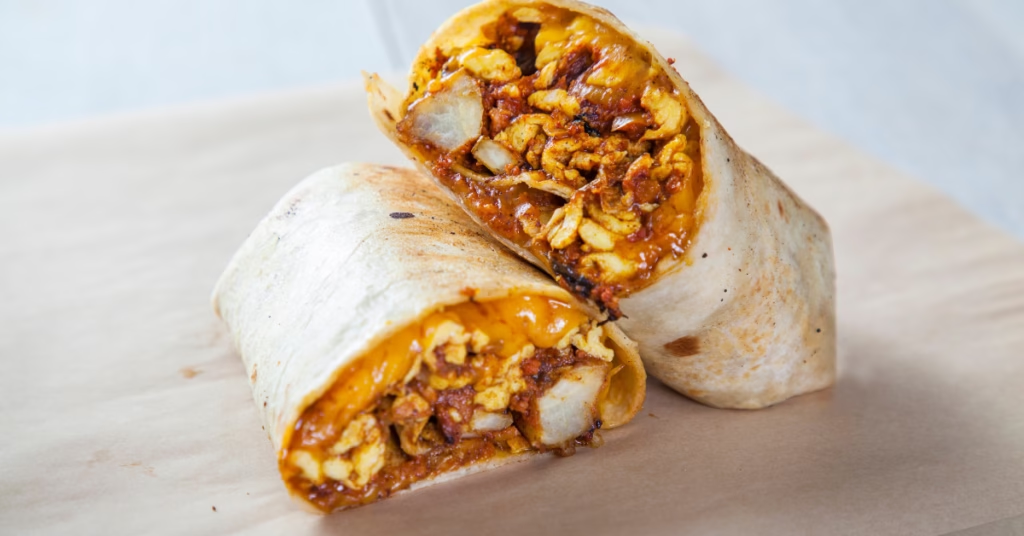
A typical Chipotle burrito can contain over 1,200 calories, which is more than half of the recommended daily intake for many adults.
Chipotle’s generous portion sizes significantly contribute to the high calorie and nutrient counts of their meals.
The average Chipotle burrito weighs approximately 20 ounces, which is far more than the recommended portion size for a single meal.
According to USDA dietary guidelines, a balanced meal should contain about 4 ounces of protein, 1 cup of grains, and 1-2 cups of vegetables. A standard Chipotle serving exceeds these recommendations across all categories:
- Rice: Approximately 1.5 cups (versus recommended 1 cup)
- Meat: 4+ ounces (at the upper limit of recommendations)
- Beans: Nearly 1 cup (counting as both protein and vegetable)
- Toppings: Additional 4-8 ounces of ingredients
These oversized portions create a perception of value but come at a significant nutritional cost.
Research published in the Journal of the Academy of Nutrition and Dietetics has shown that restaurant portion sizes have increased by as much as 138% since the 1970s, coinciding with a rise in obesity rates.
Marketing vs. Reality: The “Health Halo” Effect
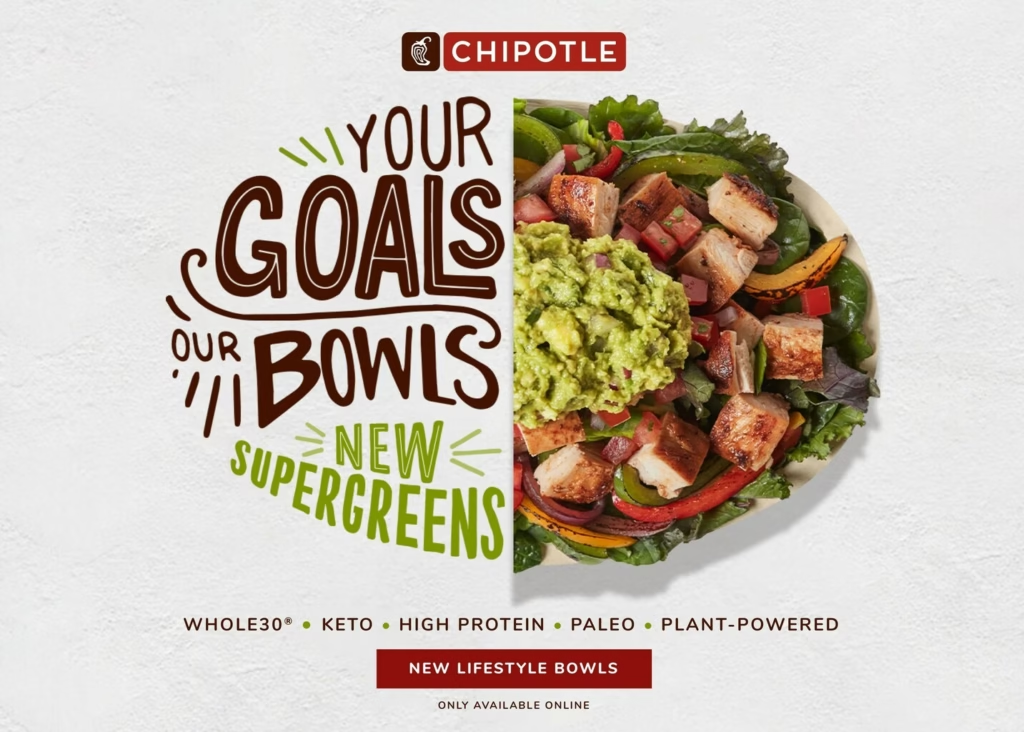
Chipotle’s marketing emphasizes “fresh” and “natural” ingredients, creating a perception of healthiness that nutritional facts don’t always support.
Chipotle has masterfully created what nutritionists call a “health halo,” a perception of healthiness that influences consumers to overlook actual nutritional content.
Their marketing emphasizes “Food With Integrity,” “fresh ingredients,” and “no artificial flavors or preservatives,” all of which are true, but these claims don’t necessarily make their food healthy.
The “Fresh” Fallacy
While Chipotle does use fresher ingredients than many fast-food chains, “fresh” doesn’t automatically mean “low-calorie” or “nutritionally balanced.”
Fresh guacamole still contains 230 calories per serving, fresh cheese still adds saturated fat, and fresh sour cream still contributes significant calories with minimal nutritional benefits.
The emphasis on ingredient quality creates a psychological permission to indulge, with many customers believing they’re making a healthy choice regardless of what they order.
The Customization Trap
Chipotle’s build-your-own model gives customers a sense of control over the healthiness of their meal.
However, this customization often leads to calorie overload as customers add “just a little” of multiple high-calorie toppings.
The psychological satisfaction of customization can mask the nutritional impact of these choices.
A 2018 study in the Journal of Consumer Research found that when people perceive food as healthy, they tend to order more of it and feel less full after eating, a phenomenon that perfectly describes the Chipotle experience for many customers.
Chipotle vs. Traditional Fast Food: A Surprising Comparison
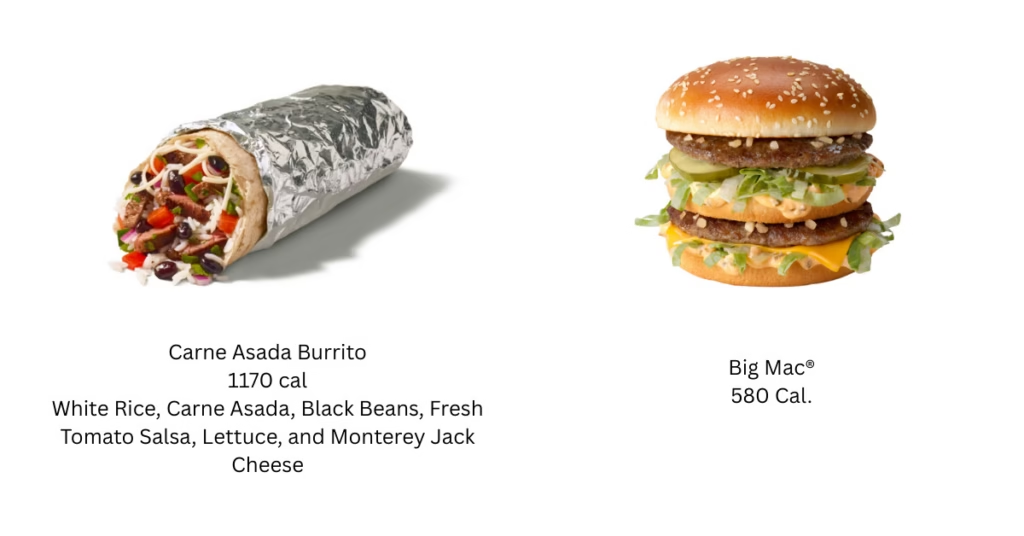
A Chipotle burrito can contain twice the calories and sodium of a McDonald’s Big Mac.
When comparing Chipotle to traditional fast-food options, the results might surprise you. Despite its healthier reputation, many Chipotle meals contain more calories, sodium, and fat than their counterparts at chains like McDonald’s or Taco Bell.
| Menu Item | Calories | Sodium (mg) | Total Fat (g) |
| Chipotle Chicken Burrito (with rice, beans, cheese, salsa, sour cream) | 1,050 | 2,150 | 39 |
| McDonald’s Big Mac | 563 | 1,010 | 30 |
| Chipotle Steak Bowl (with rice, beans, cheese, salsa, guacamole) | 865 | 1,750 | 41 |
| Taco Bell Crunchwrap Supreme | 530 | 1,200 | 21 |
The comparison reveals that nutritional facts don’t always support Chipotle’s reputation as a healthier alternative.
While the quality of ingredients may be higher at Chipotle, the quantity often leads to higher calorie and sodium counts than traditional fast food.
“Many consumers experience what we call ‘health halo confusion,’ where the perception of ingredient quality overshadows the actual nutritional content. A meal made with fresh, natural ingredients can still be calorie-dense and sodium-heavy.”
This isn’t to suggest that McDonald’s is healthier than Chipotle; ingredient quality does matter. However, it highlights that Chipotle’s health-conscious reputation should be viewed with a critical eye.
For a deeper dive into McDonald’s menu nutrition, check out our full guide here: https://grosseating.com/mcdonalds-nutrition-whats-really-in-your-meal/
Health Implications: The Long-Term Impact of Regular Chipotle Consumption
Regularly consuming Chipotle meals without careful consideration of their nutritional content can contribute to several health concerns:
Weight Gain and Obesity
With many menu combinations exceeding 1,000 calories per meal, regular Chipotle consumption can contribute to caloric surplus and weight gain.
A pound of body fat represents approximately 3,500 excess calories, meaning that eating at Chipotle just twice a week could contribute to a weight gain of 1-2 pounds per month if those calories aren’t burned through activity.
Hypertension and Cardiovascular Risk
The high sodium content in Chipotle meals is particularly concerning. Regular consumption of high-sodium foods is strongly linked to hypertension (high blood pressure), which increases the risk of heart attack, stroke, and kidney disease.
The American Heart Association recommends no more than 2,300mg of sodium daily, with an ideal limit of 1,500mg for most adults, a threshold that a single Chipotle meal can exceed.
Metabolic Impact
The combination of high calories, refined carbohydrates (from the flour tortilla and white rice), and saturated fats can impact metabolic health.
Research has linked this dietary pattern to increased risk of type 2 diabetes and metabolic syndrome, particularly when consumed regularly.
Did You Know? A study published in the Journal of the Academy of Nutrition and Dietetics found that a single high-sodium meal can stiffen blood vessels within 30 minutes, temporarily raising blood pressure even in people with normal blood pressure.
These health risks don’t mean you should never eat at Chipotle. Instead, they emphasize the importance of making informed choices and treating Chipotle as an occasional indulgence rather than a regular meal option, especially when ordering high-calorie combinations.
Making Healthier Choices: How to Navigate the Chipotle Menu
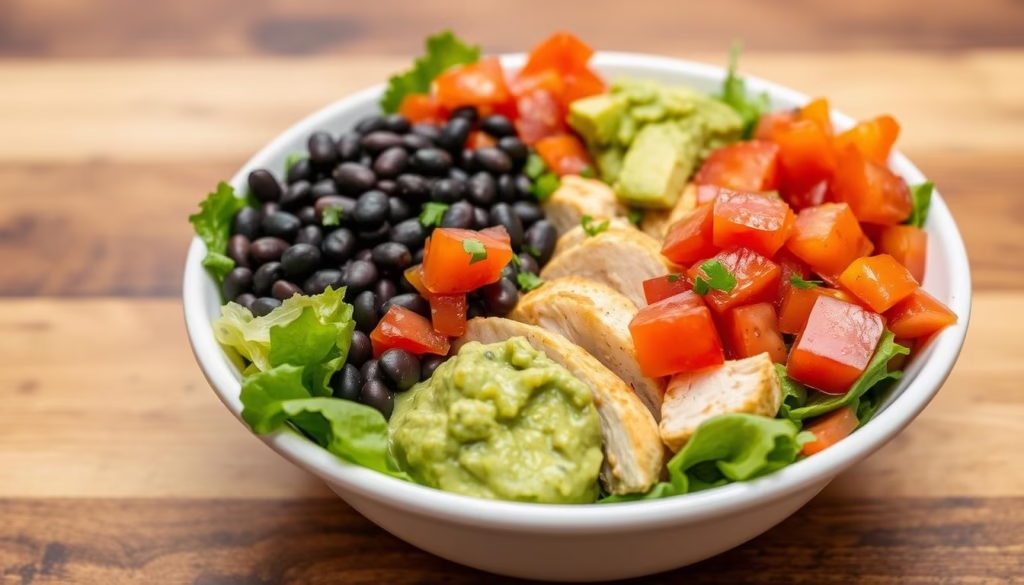
A healthier Chipotle bowl with salad base, lean protein, beans, and vegetables can provide nutrition without excess calories.
Despite the nutritional concerns, it is possible to create a reasonably healthy meal at Chipotle with careful choices.
Here’s how to navigate the menu:
Base Selection: Bowl Over Burrito
The flour tortilla alone adds 320 calories and 600mg of sodium to your meal. Opting for a bowl or salad immediately cuts these numbers. If you choose a bowl, consider asking for “light” rice to reduce carbohydrates and calories.
Protein Choices: Lean and Mean
Chicken is generally the leanest protein option, with 180 calories and 32 grams of protein per serving. Sofritas (tofu) is another good option at 150 calories, though it contains more sodium (560mg) and less protein (8g) than chicken.
Strategic Toppings
Load up on fajita vegetables, which add flavor, volume, and nutrients for just 20 calories per serving. Be selective with high-calorie toppings:
Better Choices:
- Fajita vegetables (20 calories)
- Fresh tomato salsa (25 calories)
- Lettuce (5 calories)
- Black or pinto beans (130 calories, high in fiber and protein)
- Small portion of guacamole (for healthy fats)
Use Sparingly:
- Cheese (110 calories, high in saturated fat)
- Sour cream (110 calories, high in saturated fat)
- Queso (120 calories, high in sodium)
- Chipotle-honey vinaigrette (220 calories, 850mg sodium)
- White rice (210 calories, refined carbohydrates)
Portion Control Strategies
Even with healthier ingredients, Chipotle’s portions can lead to calorie overload. Consider these strategies:
- Ask for “light” portions of higher-calorie items
- Split your meal and save half for later
- Share a bowl or burrito with a friend
- Skip the chips (540 calories per bag)
Use Chipotle’s Nutrition Calculator
One of Chipotle’s most valuable tools for health-conscious customers is its online nutrition calculator.
This interactive tool allows you to build your meal virtually and see the nutritional impact of each ingredient choice in real-time.
How to Use the Calculator Effectively
The nutrition calculator can be found on Chipotle’s website and mobile app. Here’s how to make the most of it:
- Start by selecting your base (burrito, bowl, salad, or tacos)
- Add your preferred protein
- Select rice, beans, and additional toppings
- Watch the nutritional information update with each selection
- Experiment with different combinations to find a balance that meets your nutritional goals
The calculator displays calories, fat, saturated fat, cholesterol, sodium, carbohydrates, fiber, sugar, and protein for your customized meal. This transparency allows you to make informed decisions based on your specific dietary needs.
Setting Nutritional Targets
When using the calculator, consider these general targets for a balanced meal:
- Calories: 500-700 for a main meal
- Sodium: Under 800mg (ideally)
- Protein: 20-30g for satiety and muscle maintenance
- Fiber: At least 5g for digestive health
By setting these targets before you start building your meal, you can make adjustments to stay within healthy parameters while still enjoying a satisfying Chipotle experience.
Sample Meal Plans: Healthier Chipotle Options
Here are three balanced meal options at Chipotle that provide good nutrition without excessive calories or sodium:
Lean Protein Bowl
- Salad base (romaine lettuce)
- Chicken
- Black beans (light)
- Fajita vegetables
- Fresh tomato salsa
- Small portion of guacamole
Nutrition: ~550 calories, 29g protein, 15g fiber, 820mg sodium
Plant-Based Power Bowl
- Brown rice (light)
- Sofritas
- Pinto beans
- Fajita vegetables
- Tomatillo green salsa
- Romaine lettuce
Nutrition: ~590 calories, 20g protein, 13g fiber, 1,100mg sodium
Balanced Burrito Bowl
- ½ portion brown rice, ½ portion romaine
- Steak
- Black beans (light)
- Fajita vegetables
- Fresh tomato salsa
- Small portion of cheese
Nutrition: ~510 calories, 32g protein, 9g fiber, 950mg sodium
These meal options demonstrate that with careful choices, you can create a nutritionally balanced Chipotle meal that aligns with health goals while still being satisfying and flavorful.
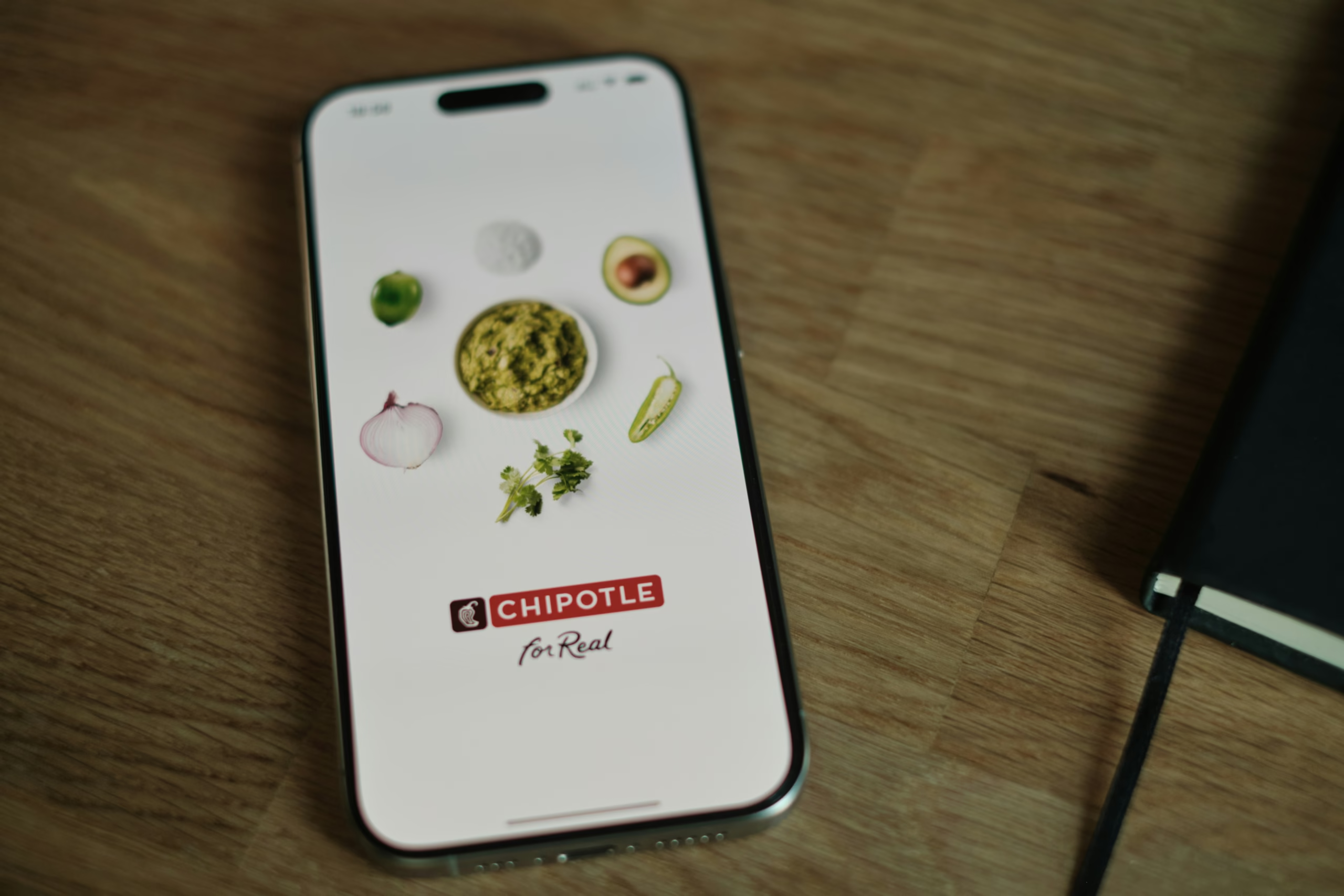
Using Chipotle’s mobile app to pre-plan your order can help you make healthier choices without pressure at the counter.
Pre-planning your order using Chipotle’s app or website before visiting the restaurant can help you make more thoughtful choices without the pressure of deciding at the counter.
This strategy allows you to carefully consider nutritional information and avoid impulse additions that can significantly increase calories and sodium.
Chipotle as an Occasional Indulgence: Finding Balance
It’s important to remember that perfect nutrition isn’t about never indulging; it’s about making informed choices most of the time.
Enjoying Chipotle as an occasional treat within an otherwise balanced diet can be part of a healthy lifestyle.
If you love Chipotle’s more indulgent options, consider these balanced approaches:
The 80/20 Approach
Many nutritionists recommend the 80/20 rule: make nutritious choices 80% of the time, allowing for less optimal choices 20% of the time. Within this framework, enjoying a fully-loaded Chipotle burrito occasionally can be part of a balanced lifestyle.
Planned Indulgence
If you know you’ll be visiting Chipotle, you might plan lighter meals earlier in the day or adjust your meals the following day to balance your overall intake. This approach allows for enjoyment without derailing longer-term health goals.
Activity Balance
Consider your activity level when making food choices. If you’re particularly active or have just completed an intense workout, your body may be better equipped to utilize the higher calorie content of a Chipotle meal.
“The occasional indulgence won’t make or break your health—it’s your consistent habits that matter most. If you love Chipotle, enjoy it mindfully as part of an overall balanced approach to eating.”
Is Chipotle healthier than McDonald’s?
Not necessarily. While Chipotle uses higher-quality ingredients with fewer additives, many Chipotle meals contain more calories, sodium, and fat than popular McDonald’s items. A fully-loaded Chipotle burrito can have twice the calories of a Big Mac.
Can I eat at Chipotle while trying to lose weight?
Yes, with careful choices. Opt for a bowl or salad base, choose lean protein like chicken, add plenty of vegetables, and be mindful of high-calorie toppings like cheese and sour cream. Consider saving half your meal for later to control portions.
What is the healthiest meal at Chipotle?
A salad bowl featuring romaine lettuce, chicken, black beans, fajita vegetables, and fresh tomato salsa provides a balanced meal with approximately 400 calories, 40g of protein, and 10g of fiber. Add a small portion of guacamole for healthy fats if desired.
Conclusion: The Truth About Chipotle’s Health Profile
Chipotle’s “Food With Integrity” slogan and focus on fresh ingredients have successfully created a health-conscious image that doesn’t always align with the nutritional reality of their menu items.
While their ingredients may indeed be fresher and less processed than those at traditional fast-food chains, many Chipotle meals are high in calories, sodium, and fat, sometimes exceeding the nutritional impact of the very fast-food options they position themselves against.
This doesn’t mean Chipotle can’t be part of a healthy diet. The build-your-own model gives customers unprecedented control over the nutritional content of their meals, allowing for genuinely healthy options alongside more indulgent ones.
The key is making informed choices based on nutritional facts rather than marketing impressions.
By understanding the nutritional impact of different ingredients, using tools like Chipotle’s nutrition calculator, and approaching your order with specific health goals in mind, you can navigate Chipotle’s menu in a way that aligns with your overall wellness objectives.
Whether you’re looking for a protein-packed post-workout meal or an occasional indulgence, awareness is the first step toward making choices that serve both your taste buds and your health.


